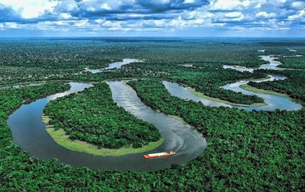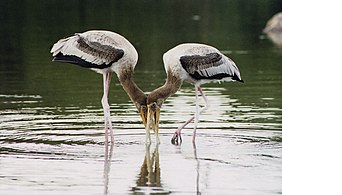

23rd August 2022 (7 Topics)
Context
The sanctuary reopened for visitors after the place was flooded following heavy discharge from the Krishna Raja Sagara dam (KRS) in Karnataka.
- Due to the discharge into the River Kaveri exceeded one lakh cusecs, the most attractions at the sanctuary were under water, forcing the Forest Department to shut the place for an indefinite period.
About
- The sanctuary is also known as the ‘Pakshi Kashi’ of Karnataka.
- It is a bird sanctuary in the Mandya District of the state of Karnataka in India.
- It is the largest bird sanctuary in the state with 40 acres in area, and comprises six islets on the banks of the Kaveri River.
- The sanctuary has been designated as a protected Ramsar site since 2022.
|
The sanctuary’s islets were formed when an embankment across the Kaveri River was built between 1645 and 1648 by the then king of Mysore, ‘Kanteerava Narasimharaja Wadiyar’. |
- The ornithologist Salim Ali observed that the islets formed an important nesting ground for a large variety of birds, and persuaded the king of Mysore to declare the area a protected area in 1940.
- The sanctuary is currently maintained by the Forest Department of Karnataka and efforts are on-going to improve the sanctuary, including purchasing nearby private land to expand the protected area.
- In 2014, around 28 sq. km around the sanctuary was declared as an eco-sensitive zone.
What are River Islets?
- An isletis a very small, often unnamed island.
- Generally, an islet has little or no vegetation and cannot support human habitation. It may be made of rock, sand and/or hard coral; may be permanent or tidal (i.e. surfaced reef or seamount); and may exist in the sea, lakes, rivers or any other sizeable bodies of water.

What are the reasons of flooding in the region?
- The sanctuary with its islets experience heavy flooding during rainy seasons when water is released from Krishna Raja Sagara dam upstream, due to heavy rains.
- During heavy flooding boating is suspended and tourists are allowed to watch the nesting birds from a distance.
- Frequent flooding has also damaged some portions of three islands over past few decades.
Biodiversity in the region
- Most of the park is within a riparian area.
|
Riparian: It relates to or living or located on the bank of a natural watercourse (such as a river) or sometimes of a lake or a tidewater riparian trees. |
- Flora:
- Riverine reed beds cover the banks of the islands, while the islands themselves are covered in broadleaf forests, with dominant species being Terminalia arjuna (Arjun tree), bamboo groves, and Pandanus trees.
- Eucalyptus and acacia trees have also been planted, which might lead to long-term eradication of native species.
- The endemic and threatened lily Iphigenia mysorensis of the family Colchicaceae also grows in the sanctuary.
- Fauna:
- Roughly 170 bird specieshave been recorded.
- Of these, the painted stork, Asian openbill stork, common spoonbill, woolly-necked stork, black-headed ibis, lesser whistling duck.



